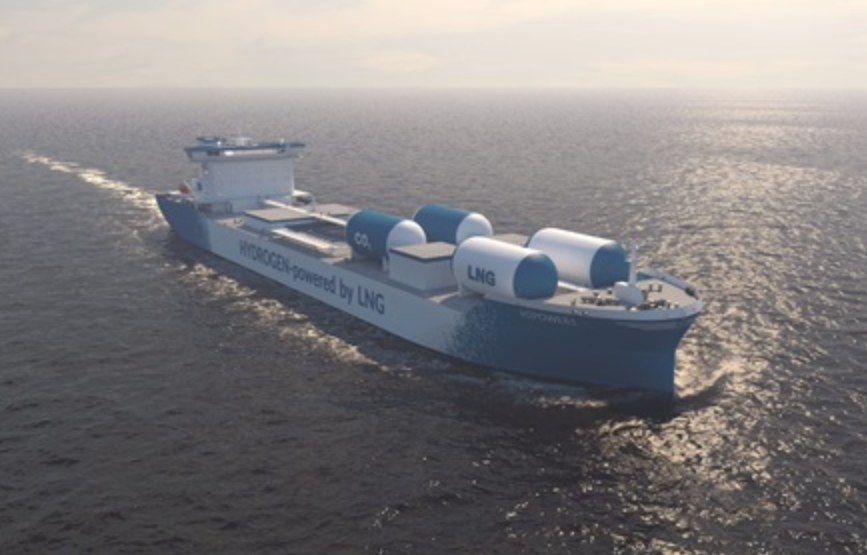Sweden – Swedish designer FKAB Marine Design’s hydrogen-powered MR Tanker has received the first Approval in Principle (AiP) of a design using currently viable technology and fuels to meet IMO 2050 targets.
Hydrogen and carbon dioxide are produced by combining the ship’s fuel (LNG) with steam, which is then used to propel the vessel. ABB and Helbio collaborated on the design of the LNG/hydrogen-fueled MR vessel.
In order to separate LNG molecules into hydrogen and carbon dioxide, the MR tanker uses a Helbio gas reformer to combine LNG with steam. ABB has developed a hybrid marine power system that uses hydrogen to power both internal combustion engines and fuel cells. Splitting the molecules of LNG captures CO2 rather than exhaust gas, which would otherwise be released into the atmosphere.
For a ship’s entire service life, not just when it gets closer to 2030, any solution to reduce CO2 emissions should ensure a competitive Carbon Intensity Index (CII) rating with increasingly strict rating thresholds. Conventional ships built with the intention of being retrofitted after 10-15 years from delivery may find this to be a significant constraint.
Hybrid option
To keep the ship’s CII rating at its highest throughout its lifespan, this design allows for a steady increase in hydrogen use while reducing CO2 emissions in lockstep with the relevant regulations. To achieve full decarbonization, the ship can run its engine on hydrogen or generate all of its own power through a fuel cell system. The owner has complete control over how much CO2 is saved in this manner.
Decarbonization will be impossible without carbon disposal as a key technology in the future. Onshore carbon storage will not be necessary until 2032 at the earliest. Using the cryogenic steam from the LNG, CO2 can be liquefied and used as the inert gas in the tanker. There is no need for additional bunkering, other than the normal LNG supply. It is possible to use the hydrogen generated to power the main engine or fuel cells, or a hybrid of the two. The hybrid option is covered by the AiP.





